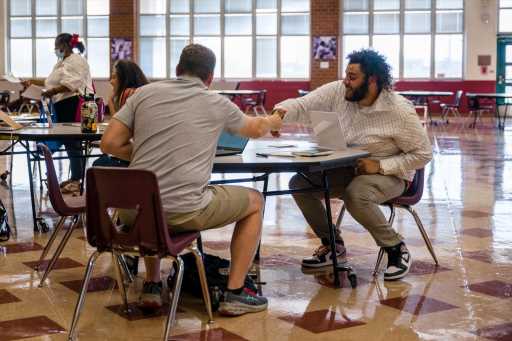Colorado’s unemployment rate held steady for the second month in a row at 3.4% in September, and hiring was down significantly but still strong during the month, especially in the tourism sector, according to a monthly update from the Colorado Department of Labor and Employment.
Colorado employers added 5,600 nonfarm jobs last month, which is down from the 14,600 added between July and August. Initially, the state had estimated that 12,400 jobs were added in August, but revised the number higher after receiving more reports from employers.
The private sector added 7,600 jobs last month, while the public sector lost 2,000. The strongest gains came in leisure and hospitality, up by 3,500 jobs on the month, then other services, up by 2,300 jobs, and educational and health services, up by 2,000.
Job losses were recorded in the construction and financial sector, likely because of the softening housing market.
“From a labor market perspective, there is zero indication of a recession,” said Ryan Gedney, senior labor economist with the state in a press call on Friday morning.
He said unemployment claims are not rising and the unemployment rate remains at a historically low level and is holding steady.
During the recovery from the pandemic, Colorado has seen a yo-yo pattern of a very strong month followed by a weaker month in terms of hiring. But by pre-pandemic standards, the addition of 5,600 jobs in September would be a strong showing.
The state has a job recovery of 119.6%, measured against the jobs lost during the early months of the pandemic. That is much better than the U.S. recovery rate, which stands at 102.3%.
Colorado was among 15 states that saw no change in its unemployment rate. Another 19 states saw an increase and 16 states, mostly large ones, saw a decrease, according to the U.S. Bureau of Labor Statistics.
Broomfield economist Gary Horvath said the employment report is encouraging on the surface, but noted that like the state’s weather in the autumn, people should enjoy the warmth and sunshine and prepare for the cold and snow.
He said higher interest rates are weighing on the mortgage and housing industries and that inflation is causing a pullback in consumer spending. Those headwinds should start to show themselves more in the weeks and months ahead.
Source: Read Full Article
